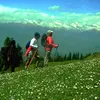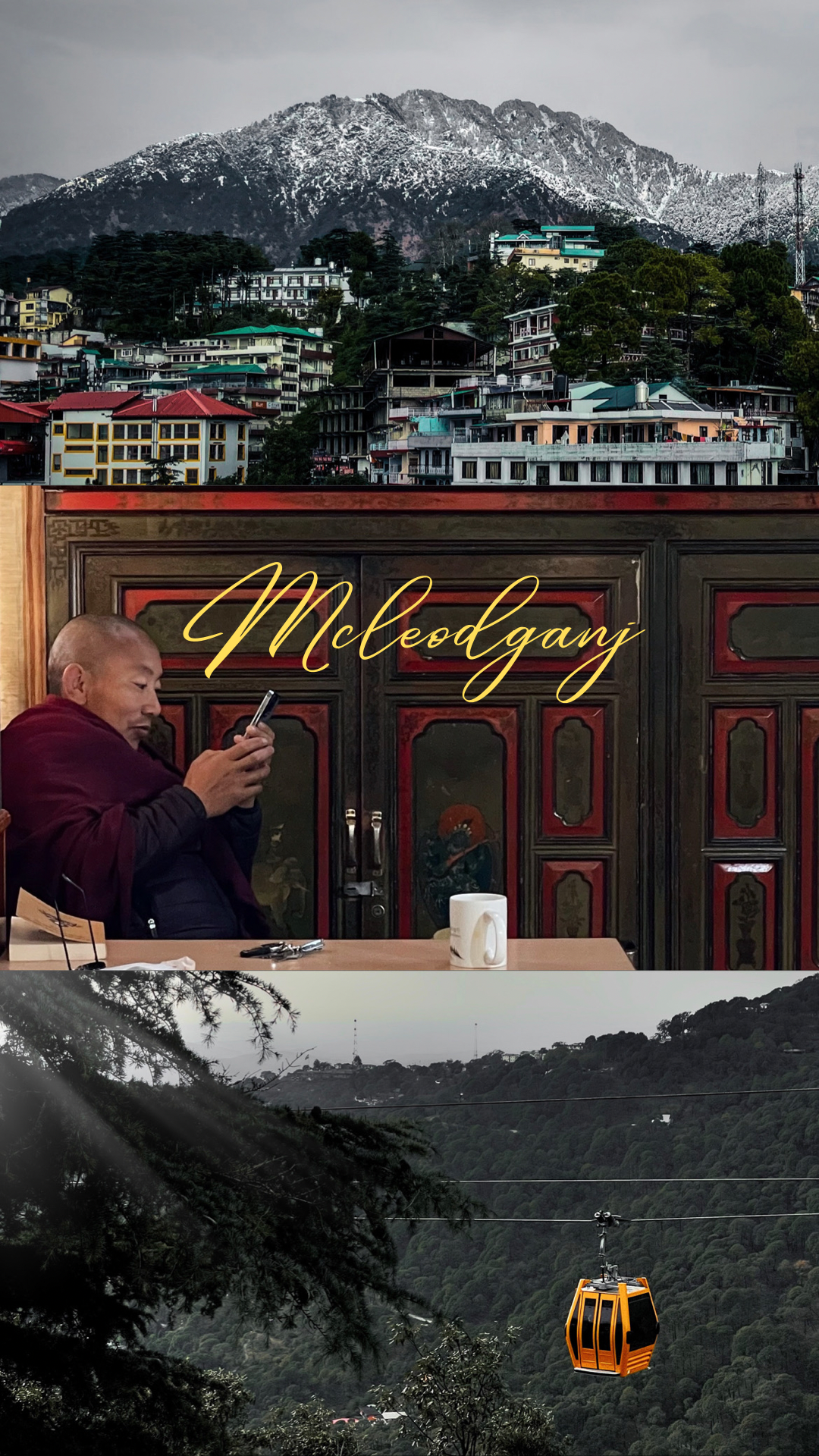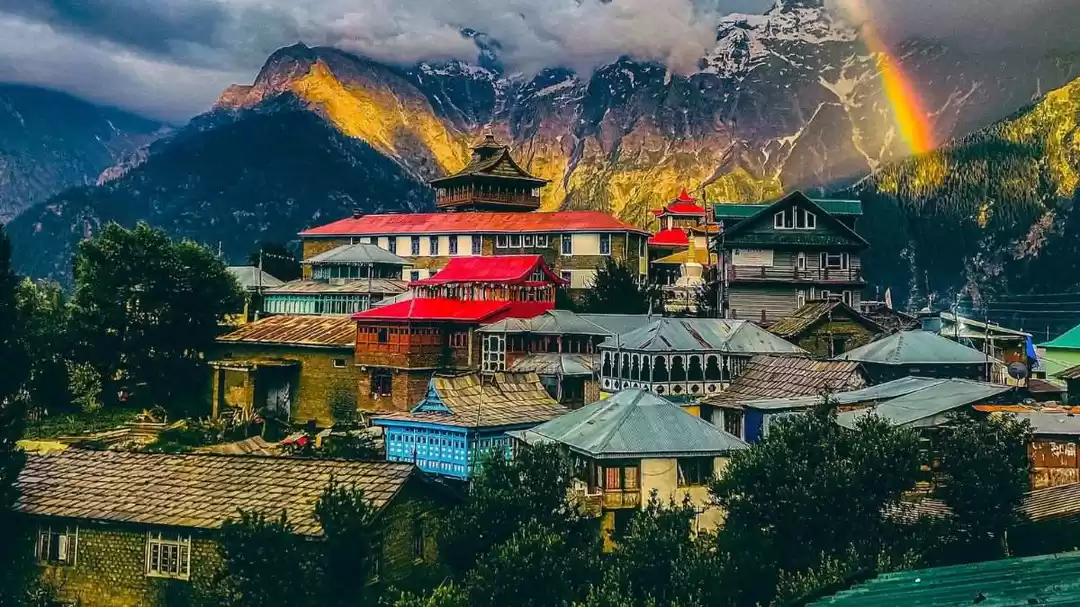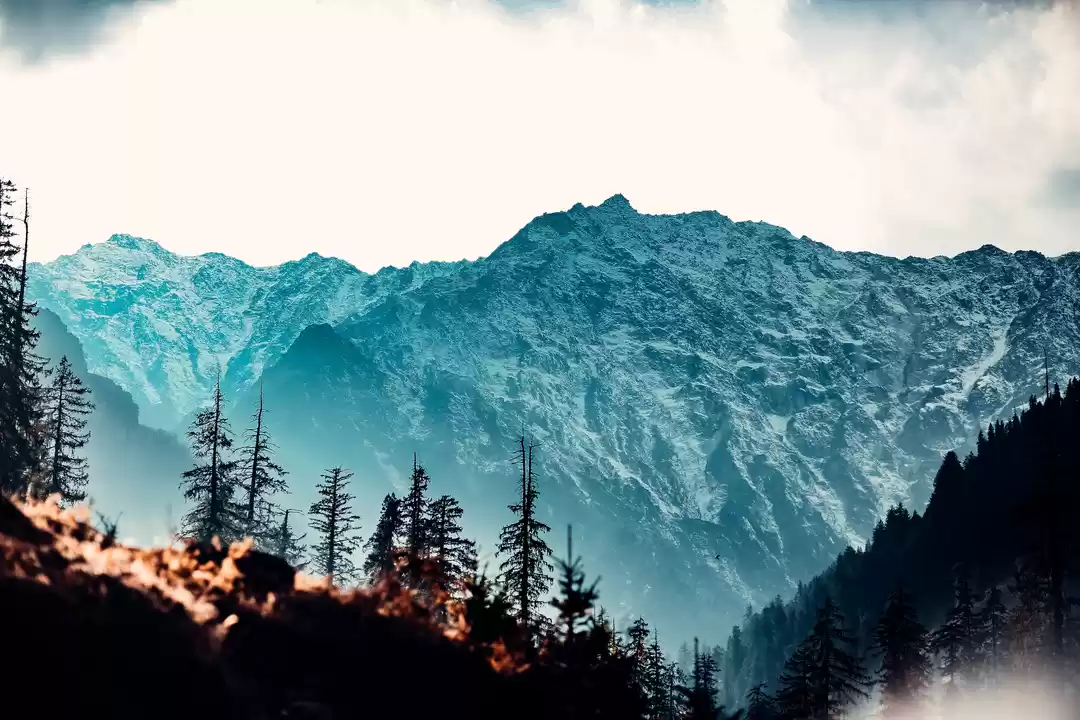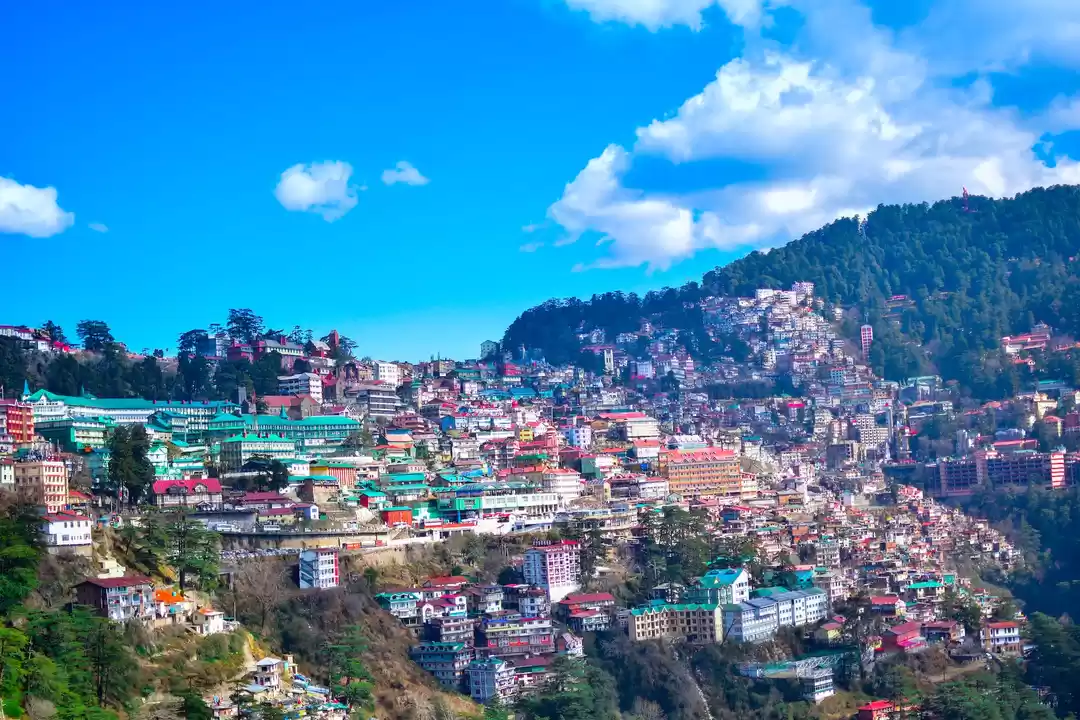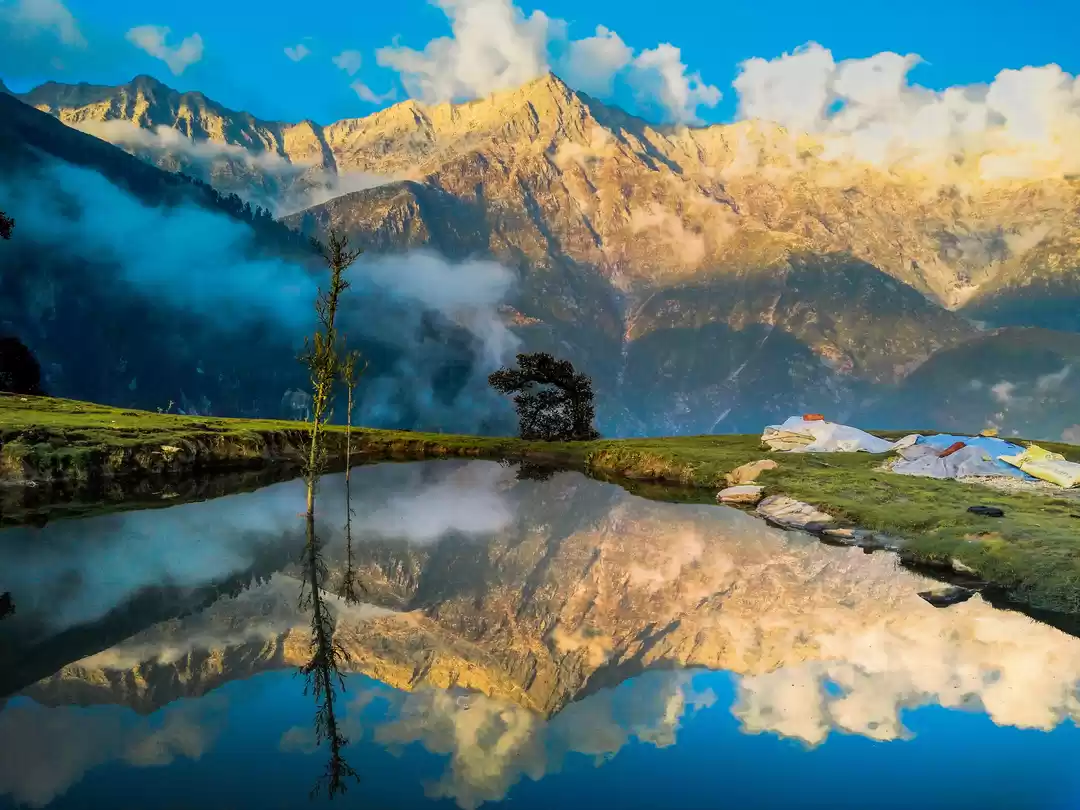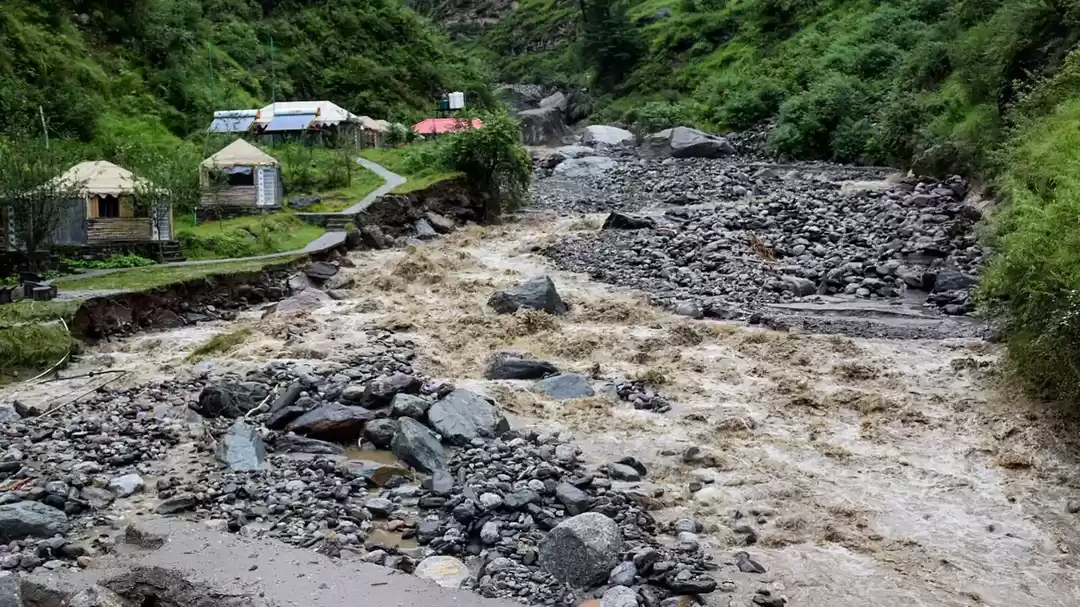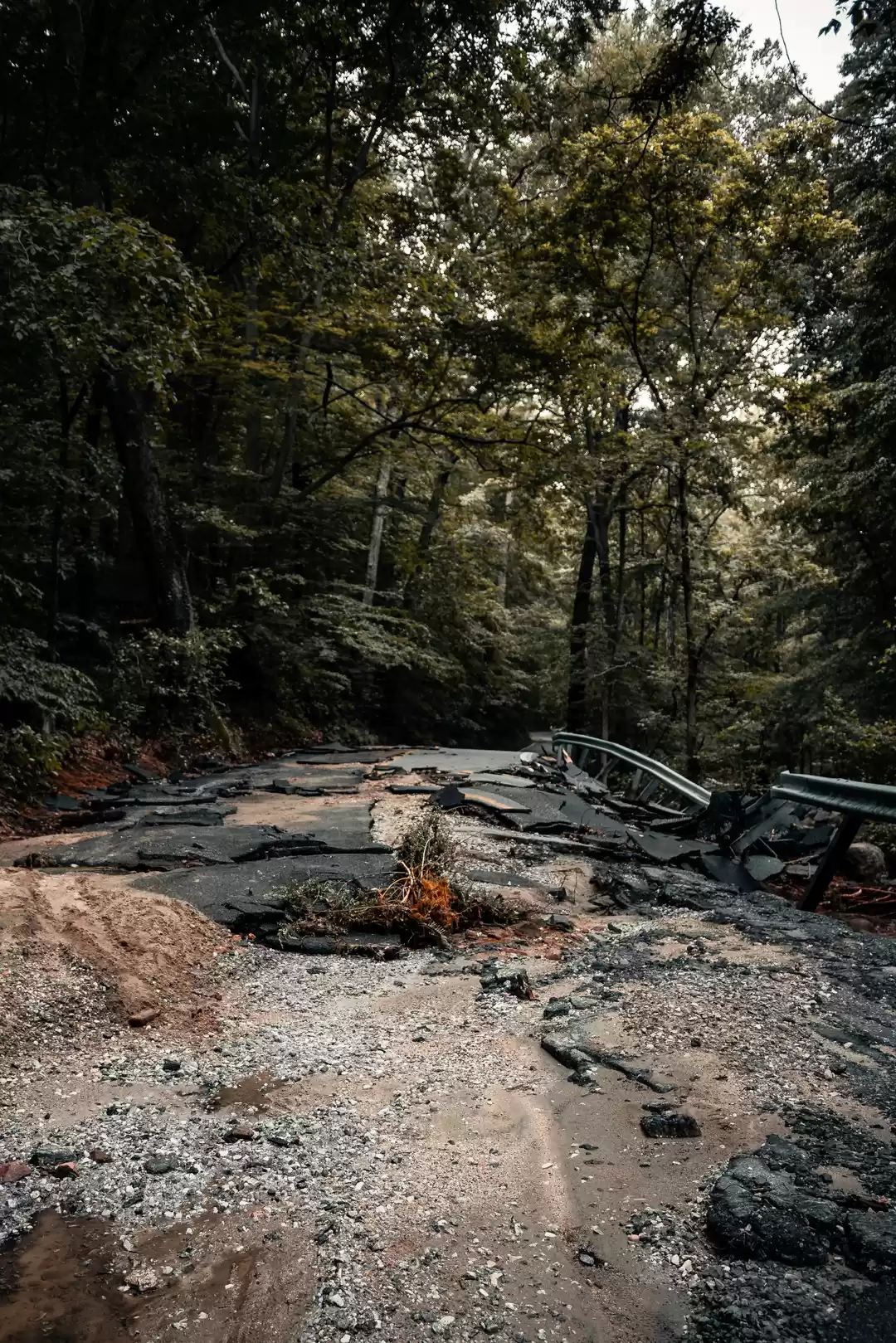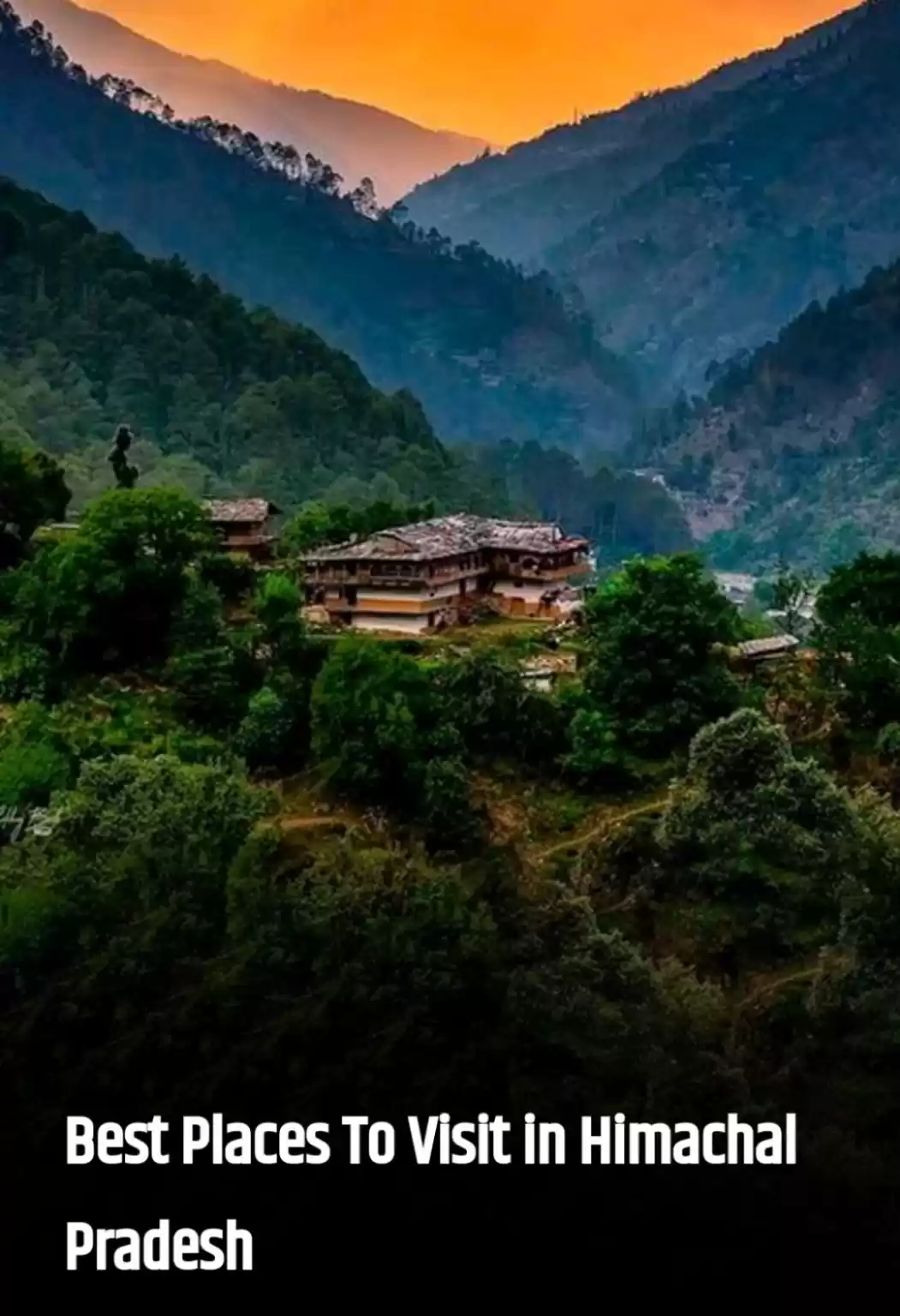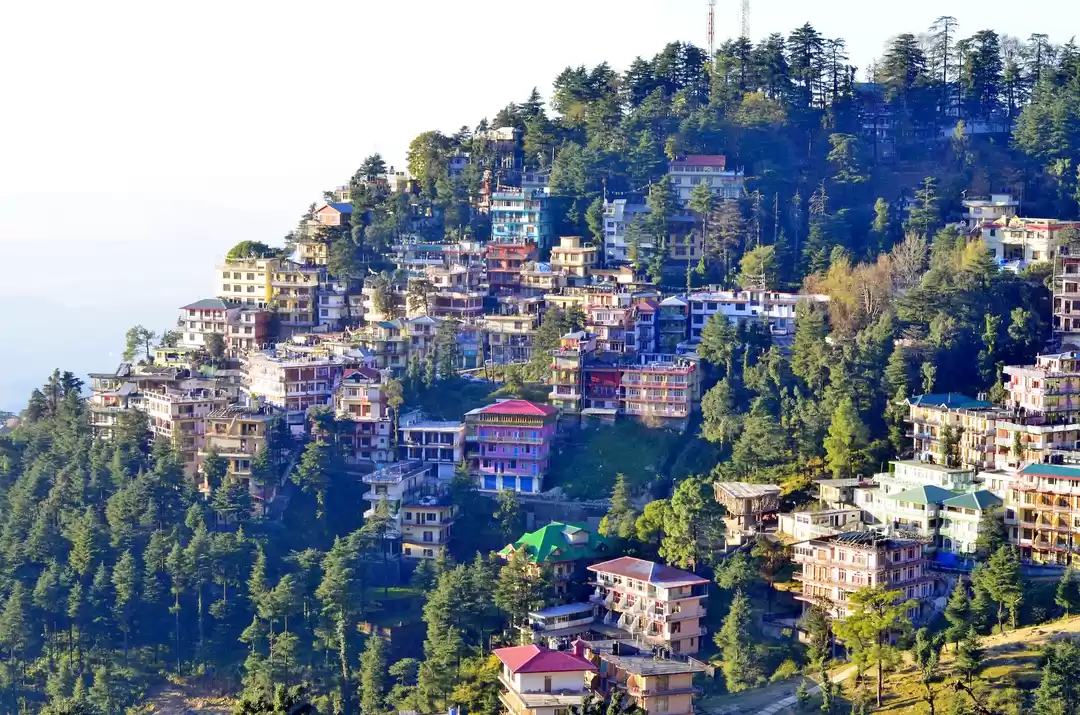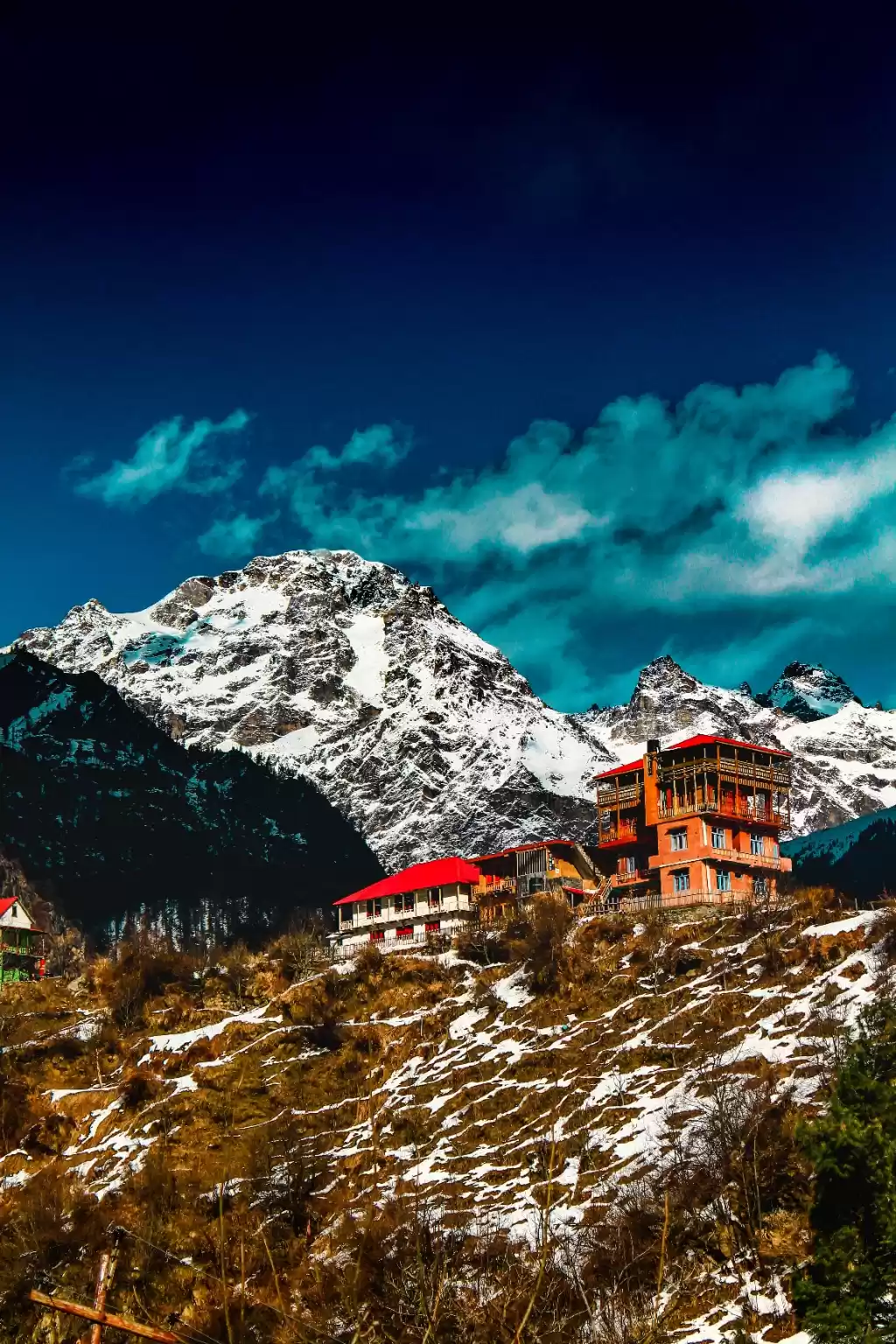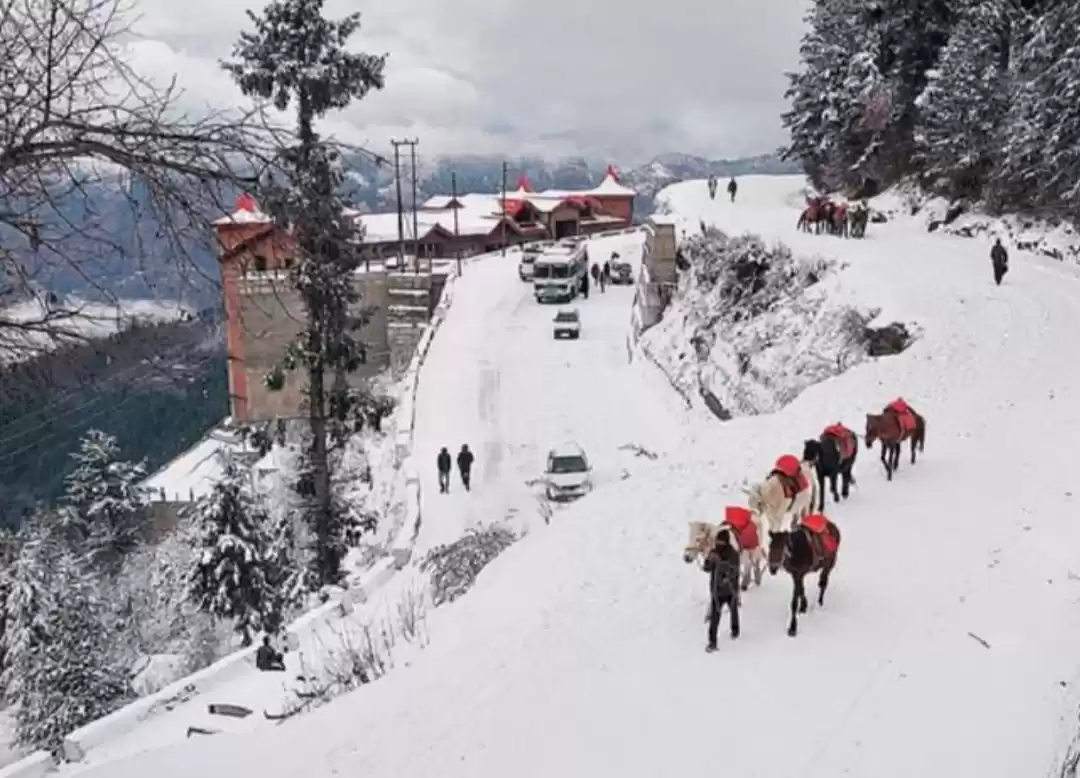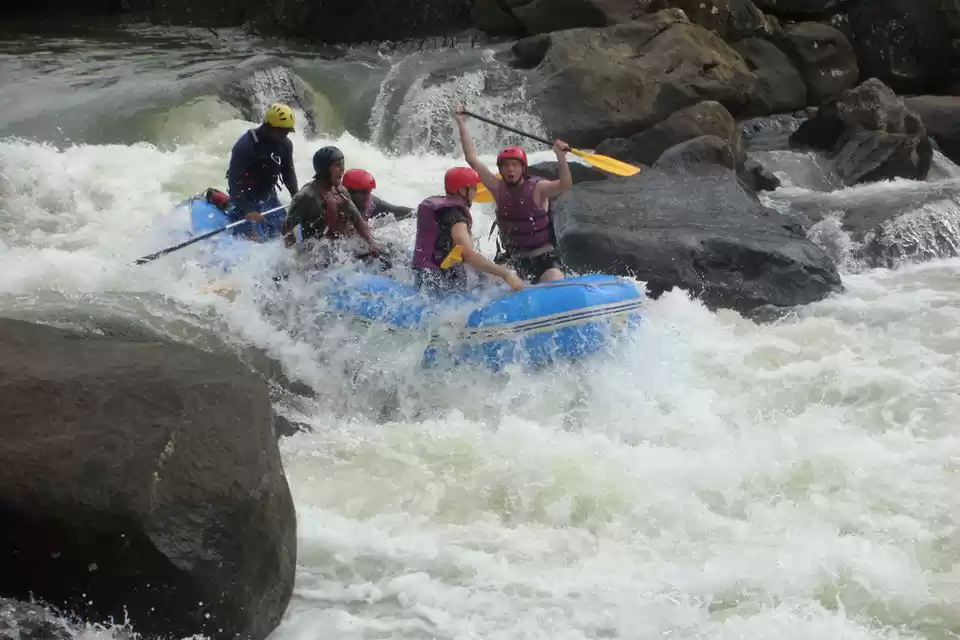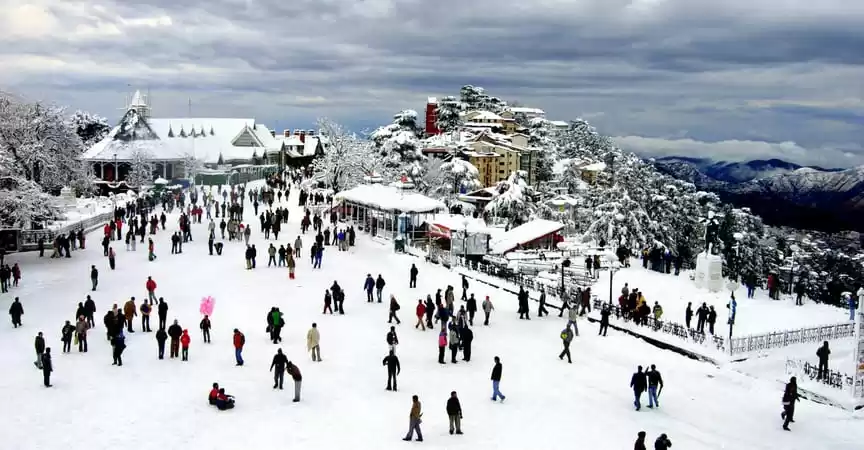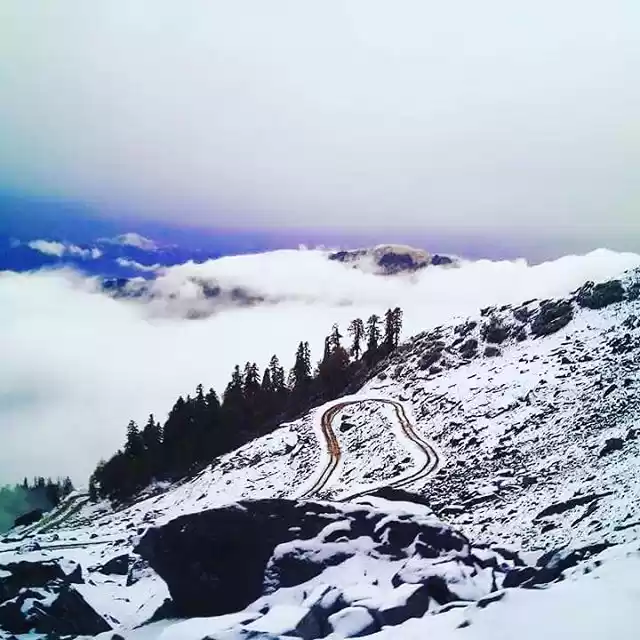
Shimla was built on top of a total of seven different hills namely: Inverarm Hill, Observatory Hill, Prospect Hill, Summer Hill, Bantony Hill, Elysium Hill and Jakhoo Hill. The highest point in Shimla is the Jakhoo hill, which is at a height of 2,454 metres (8,051 ft). Being the summer capital of British India, Shimla has some of the finest architectural heritage bestowed to it, and of course add to it the various splendors of nature, forests, waterfalls and glades.
Our walk begins in the morning from The Christ church on the ridge and gradually progresses westwards, first towards The Gaiety Theatre and after the scandal point towards Bantony hill whose top is adorned by the Bantony castle built in 1880, while its lower slope houses the Catholic church. A little further ahead are the Grand hotel and the Kali Bari temple. Our walk continues past more architectural heritage structures like the unique railway board building, Gorton castle as we reach Inverarm hill which houses the State museum and a little ahead is the Observatory hill with the Viceregal Lodge, which housed the Viceroy in British times and now is established as The Indian institute of Advanced studies. Our walk finishes here.
Distance 5kms
Shimla Heritage Walk (Full Day)
Shimla was built on top of a total of seven different hills namely: Inverarm Hill, Observatory Hill, Prospect Hill, Summer Hill, Bantony Hill, Elysium Hill and Jakhoo Hill. The highest point in Shimla is the Jakhoo hill, which is at a height of 2,454 metres (8,051 ft). Being the summer capital of British India, Shimla has some of the finest architectural heritage bestowed to it, and of course add to it the various splendors of nature, forests, waterfalls and glades.
Our walk begins in the morning from The Christ church on the ridge and gradually progresses westwards, first towards The Gaiety Theatre and after the scandal point towards Bantony hill whose top is adorned by the Bantony castle built in 1880, while its lower slope houses the Catholic church. A little further ahead are the Grand hotel and the Kali Bari temple. Our walk continues past more architectural heritage structures like the unique railway board building, Gorton castle as we reach Inverarm hill which houses the State museum and a little ahead is the Observatory hill with the Viceregal Lodge, which housed the Viceroy in British times and now is established as The Indian institute of Advanced studies. Our first half of the walk finishes here.
Enjoy some tea and snacks at Viceregal lodge café and thereafter continue your walk through a thickly forested path to Summerhill which houses the Himachal University. We board our vehicle here and driving through meandering roads head for the Prospect hill, adorned with the temple of Kamna Devi on the top. After spending a while indulging in some Photography we board the vehicles again, and driving through Boileauganj, Cart road we make a dash for Annadale and visit the Army museum. Backtrack on the same road we drive through Victory tunnel and past Elesium hill which has The Auckland house school we reach Sanjauli from we drive uphill to Jakhoo hill which has a Hanuman temple dedicated to it at the top. From here we will descend, walking back to the ridge. Our walk finishes here.
Distance Walking 7kms, Vehicle 30kms
THE CATCHMENT SANCTUARY WALK
Charabara in Shimla is surrounded on three sides by the magnificent Shimla Water Catchment Sanctuary, a 125 year old sanctuary that was established by the British as a reserved forest. The sanctuary was the initial source of water for Shimla, the water pumped to Shimla town through a series of steam pumps, reputed to be the first of their kind in the country. Today this pristine and undisturbed forest stretches across an area of 12 square kilometres and is considered by many as one of the wealthiest storehouses of Himalayan flora. This extremely dense forest is also the habitat for a vast variety of fauna, the most prominent being the Leopard. Although a sighting of this extremely human-shy and nocturnal animal is very rare, regular reports of droppings prove the existence of a large population within the sanctuary. The Himalayan Black Bear and the Brown Bear, Barking Deer, Goral, Jackal, Indian Red Fox, Striped Hyena and the Yellow-Throated Martin are some of the species of wildlife that thrive in the undisturbed forests of the sanctuary. A wide variety of bird and pheasant species can also be spotted in the lower altitude belts of the sanctuary, some of the more prominent ones being the Cheer, Koklas and Khaleej pheasants, the Himalayan Pied Woodpecker, the Great Himalayan Barbet and some sparklingly colorful minivets. A bifurcation penetrates deep into the sanctuary along a prominent ridgeline. Descend down to the Seyog Forest Rest House, a hundred year old lathe and plaster (Dhajji) structure located in the midst of this silent forest. The narrow trail undulates for an hour or more through one of the best-preserved forests in Asia. Cedars, Firs, Pines and Oaks jostle each other for space and the canopy-density at places prevents even the sunlight from peeping through to the forest floor. Droppings and pugmarks of the fauna are regular sightings along this trail and if ones luck holds out, a perky Barking Deer too might flash past in gay abandon. As one would guess, this is an excellent site for some bird-watching too.
Our walk starts in the morning at 9:30 when our expert picks you up from your hotel and we drive to Dhalli, and further up to Charabara. A bifurcation penetrates deep into the sanctuary along a prominent ridgeline. Descend down to the Seyog Forest Rest House, a hundred year old lathe and plaster (Dhajji) structure located in the midst of this silent forest. The narrow trail undulates for an hour or more through one of the best-preserved forests in Asia. Cedars, Firs, Pines and Oaks jostle each other for space and the canopy-density at places prevents even the sunlight from peeping through to the forest floor. Droppings and pugmarks of the fauna are regular sightings along this trail and if ones luck holds out, a perky Barking Deer too might flash past in gay abandon. A well-deserved picnic lunch (be sure not to litter) at the ancient rest house can be followed by a stroll down to the man-made reservoir that collects water from across the sanctuary before supplying it to Shimla town. As one would guess, this is an excellent site for some bird-watching too. Our walk continues deeper into the sanctuary through a network of trails and we end it just short of Kufri at around 2:00PM.
Drive back to hotel.
Distance Walking 9kms, Vehicle 30kms
THE SHALI TIBBA HIKE
The Shali Tibba (2867m) is the highest peak in the vicinity of Shimla. It is a magnificent isolated pinnacle with a Kali temple on the top. The ascent up to Shali is an ancient trail through dense pine forests and rolling alpine pastures. It is a steep and steady climb to the often mist enveloped peak. The peak commands an unforgettable view of endless snow covered ranges along with the Sutlej valley and the densely forested hills of Shimla, Fagu and Narkanda. For the avid photographer and nature lover, this one-day trek offers the experience of a lifetime.
DETAILED ITINERARY:
1) SHIMLA (2205 m)- MASHOBRA - KHATNOL (1850 m)...45 km.
Depart Shimla at 6 A.M. by jeep. Breakfast at Mashobra, noted for its apple Orchards and thick woods of oak and pine. Proceed via Baldhea along a fascinating dirt track to Gulshaini, a tiny hamlet (1250 m) situated at the base of the peak. From Gulshaini it is a steady climb along a rough road till Khatnol, an isolated village perched amidst rolling fields. Here we park the jeep to start the ascent.
2) KHATNOL - SHALI TIBBA (2867m)...5 km.
Halt at the Khatnol Forest Rest House for a well-deserved break along with a sumptuous lunch. Begin the climb to Shali after a short rest. The landscape changes dramatically as we follow the ancient trail towards the peak. It is a three-hour climb at a leisurely pace with ample time to stand and stare at the surrounding magnificence and the imposing peak looming ahead. The final climb is a tough one and is amply rewarded by the breathtaking view from the top.
3) SHALI TIBBA - KHATNOL - SHIMLA
After a visit to the historic temple and a frenzied session of photography, we start the surprisingly quick descent down to Khatnol. One is back in the jeep by sunset to start the drive back to Shimla. Reach Shimla by late evening for a well-deserved and satisfying sleep with the memories of climbing the highest peak of the Shimla hills.
Distance Walking 10kms, Vehicle 100kms
THE MASHOBRA to SIPUR HIKE
Early morning drive from Shimla to the picturesque Mashobra valley which is mirrored by the tall Shali Peak (3200m). The route holds thick woods where practically every tree of the region grows - Himalayan Cedar (the almost legendary ‘Deodar’), Spruce, Oak, Rhododendron, Horse-Chestnut, Birch and Pine. Depending on the time of year, a variety of wildflowers grace the hillsides - the rhododendrons flower a dark red in spring, summer has banks of roses, daises and buttercups, the monsoons speckle the luxuriant grass with lilies-of-the-valley and peonies. Through the year, flitting butterflies stab quick flashes of color. The trail crosses picture-perfect hamlets where the word ‘time’ seems to mean only the seasons and the passing years - and where life has followed a steady pace for centuries. Trace fast flowing streams, cross a ‘sacred grove’ whose majestic trees have stood undisturbed for centuries, watch village craftsmen at work, listen to legends that seem as old as the hills - and in a single day, take a lifetime’s memory of some of the marvels that the lower Himalayas hold.
Through woods of Himalayan Cedar and Spruce, the path to Seepur takes a steady dip down the valley. Past fields and orchards and wood and slate houses one arrives at the glade of Seepur - which the vicerene Lady Lytton called a “tea-cup shaped valley” and was popular for midnight picnics in the days of the Raj. Several slim streams fed by fresh-water springs nurture the soft grass of Seepur. The glade is held sacred to the local deity, Seep who ‘visits’ the spot at select times of year. Shaded by colossal Cedars, a delightful little temple built in the local style with stone and wood, rests on an edge. Smaller shrines merging with the woods are also there. This is the site of an annual fair held over the second weekend of April - and is a time for local matchmaking.
From Seepur the decline eases out to the tiny village of Shali, which holds a dozen charmingly rustic structures - and is probably named in honour of the facing peak. Here, the hike-path that snakes along the hill holds a bifurcation, and along a mild incline the route takes a right. This also marks the end of the descent. The view on the facing hill has terraced fields and age-old villages. Along the narrow path, the only sounds one is likely to hear are of one’s own breathing and the crunch of boots over scattered cones. The silence only punctuated by the song of a Himalayan Thrush or Barbet.
After Shali comes the home of the deity Seep at Deothi. Local legend has it that the deity was brought with the erstwhile rulers of the Koti state - in whose former territories the hike lies - when they migrated here from Kutlehar, which lies north-west. The temple was first established in the village of Nehra. This tract was then ruled by mavis, local strongmen who wished to share in the worship of Seep. When this was refused, the mavis started desecrating the temple. ‘Speaking’ through his worshippers, Seep declared that he wanted to move from Nehra and a day would come when a long line of ants would march through the village and where they finally circled a mound, was where he wished to reside. The ants came and circled a mound in what is now the village of Deothi - and where Seep was ceremoniously installed. The identity of this local deity has steadily been merged with that of Lord Shiva, the destroyer in the Hindu trinity. Styled as a tall gabled mushroom and belonging to an architectural genre unique to this part of the world, Seep’s temple rests at the edge of a small spur and is surrounded by other structures that ‘belong’ to him - a storehouse, a pavilion and a room for folk musicians.
Cameo appearances of pomegranate trees and tumbling streams that come close to becoming waterfalls, fresh water springs embellished with utilitarian stonework and a little bridge mark the passage to Mulkoti. Walls of shale and quartzite, now reduced to rubble, hold the remains of the little fort of the Raja of Koti where, centuries ago, the Koti rulers first established themselves. Today only the wooden gate and its brass knockers evoke the memory of their stay. The temple harks back to those days and is held in veneration as the seat of several local deities.
Half an hour’s climb from Mulkoti lies the village of Kanda and past this the path crosses the hamlets of Kanda, Ghayabo and Kaneer. The stretch is through terraced fields of assorted vegetables, corn and wheat. Blossom draped or fruit-laden orchards of apples, plums, apricots and peaches offset the fields. Every turn of the track exposes a fresh vista of the valley and the evergreen woods.
The lunch stop is at Kanda, where one can take some time to see some local craftsmanship - and even supplement the meal with fresh fruits and salads selected from the fields and orchards.
After Kaneer begins the sharp hour-long ascent to the century-old ‘Dak bungalow’, a rest house for travellers. The forests become more primeval and the Deodars, ferns and lichens seem to hold their secrets closer. With luck on ones side, one may encounter pheasants and several other birds and even deer, martens and flying squirrels. The area also has leopards, bears and snakes - but the possibility of sighting one is remote.
The vehicle will be waiting to return one to the comfort of ones Hotel.
Distance Walking 12kms,
THE RETREAT HIKE
The hike begins from Charabara and ascends to the helipad located on an adjacent hillock. The initial path till the helipad is along a tarmac road that winds past the Punjab Raj Bhavan, a vestige from the days when Shimla was also the summer capital of Punjab. From the helipad, that commands a 360-degree view of Shimla and the Himalayan ranges, a footpath penetrates the surrounding forests and descends on to the Old Hindustan-Tibet Road, completed in 1853 by enterprising British engineers as an access route to Tibet. A short stroll along this ancient road, lined by apple orchards on one side, culminates at the school for handicapped children, a landmark from where the loop back towards the hotel begins. Here, in season, one can indulge in a frenzied apple-picking session that the various apple trees growing wild all around the school offer. The trail continues along a vintage cart track that once belonged to the Commissioner for the Hill States, a British officer whose residence was converted into the Presidential Retreat, the traditional summer vacation destination of the President of India. The path meanders till the Presidential Retreat through dense Oak groves that shade a rich undergrowth of ferns and a plethora of wild flowers. From the Retreat, a tarmac road leading back to Wildflower Hall offers magnificent views of the eternal snow-capped Great Himalayan Range and the Shali peak.
Distance Walking 6kms
CYCLING THROUGH MASHOBRA AND RAFTING IN CHABBA
Shimla with its network of natural trails is a cyclist’s delight. Cycling through forests and small villages and quaint hamlets; make cycling in Shimla an unforgettable experience. Our one day adventure here is our testimony to this sweet route comprising the best of activities in Shimla.
The adventure further continues after cycling when we go Rafting on the Sutlej, the fastest flowing river in India.
Our expert meets you at your hotel in the morning at 8:00AM and we drive to Mashobra.
1. MASHOBRA to CHABBA (32kms)
The route holds thick woods where practically every tree of the region grows - Himalayan Cedar (the almost legendary ‘Deodar’), Spruce, Oak, Rhododendron, Horse-Chestnut, Birch and Pine. Depending on the time of year, a variety of wildflowers grace the hillsides - the rhododendrons flower a dark red in spring, summer has banks of roses, daises and buttercups, the monsoons speckle the luxuriant grass with lilies-of-the-valley and peonies. Through the year, flitting butterflies stab quick flashes of color. The trail crosses picture-perfect hamlets where the word ‘time’ seems to mean only the seasons and the passing years - and where life has followed a steady pace for centuries. Trace fast flowing streams, cross a ‘sacred grove’ whose majestic trees have stood undisturbed for centuries, watch village craftsmen at work, listen to legends that seem as old as the hills - and in a single day, take a lifetime’s memory of some of the marvels that the lower Himalayas hold. We cycle past Mashobra and descend 16 kms to Thaila and a further 6km to Gumma, a thrilling 22kms downhill ride, thereafrer the road flattens out till basantpur 7kms and we descend again to Chabba. We finish the ride here.
2. RAFTING SHORT STRETCH LOTI to CHABBA (Ideal for first timers, families. 7kms-45 minutes)
After the ride finishes at Chabba we are transported to Loti on the Sutlej to indulge in Rafting. This is the small stretch ideal for beginners and families, of around 45mins. We finish the rafting and drive back to the hotel.
3. RAFTING LONG STRETCH MALGI to CHABBA (Ideal for enthusiasts, 25kms-2.5 hrs)
After the ride finishes at Chabba we are transported to Malgi on the Sutlej to indulge in Rafting. This is the long stretch ideal enthusiasts, of around 2.5hrs. We finish the rafting and drive back to the hotel and reach by early evening.
Distance Cycling 32kms, Vehicle 140kms
CYCLING THROUGH MASHOBRA AND CRAIGNANO
Shimla with its network of natural trails is a cyclist’s delight. Cycling through forests and small villages and quaint hamlets; make cycling in Shimla an unforgettable experience. Our day adventure here takes us past Shimla’s stunning mountainscapes and some heritage trails.
Our expert meets you at 8:00AM at your hotel and we drive to Kufri at 2400mts affording a wide open vista of the Himalayas. Kufri is also a famous winter destination for skiing. Our ride begins here on national highway 22, on which we ride for about 4kms, before descending on an offroad to join the Mashobra Baikhalty road 6kms downhill. The trail flattens out here and we are riding in a wonderful forest where you would only hear the chirping of the birds and swish of your tyres and the screech of your brakes. Past the villages of Dak Bungalow, Purani Koti, Mashobra is 14kms from here. We reach Mashobra bazaar and start ascending towards Craignano, past the estate of the erstwhile Faridkot royalty and first we reach Talai, an open meadow amidst a thick cedar forest. We savour on our picnic hamper here and continue the ride further past Craignano and the horticulture centre which is worth a visit. Descend to Koti and take the woody trail to Baldeyan, continuing further to reach the Golf course at Naldehra, Asia’s highest and one of India’s oldest Golf courses. The place is so enchanting that Lord Curzon gave his daughter Alexandra “Naldehra” as her middle name. We feast ourselves to snacks at the HPTDC run café here and finish the ride. If one is up for it, we would prod you on to ride back to Shimla.
Distance Cycling 42kms
THE HATU PEAK HIKE IN NARKANDA
The Hatu peak is the highest peak in the 2 hour vicinity of Shimla perched at 3100mts. Between January and mid April each year the peak is out of bounds because of the blanket of heavy snow it receives. A 7kms narrow Jeep road, meandering through the forest brings us to the top; from Narkanda, the gateway to the apple country of Himachal.
Our hiking adventure today will find us driving to Narkanda early morning at 7:00AM and arriving in Narkanda at nearly 9:00 AM. After breakfast we will drive a short while from where the road narrows down and begin our hike through the thick forest. The beginning is a well defined trail and we are ascending through thick foliage, and spruce and cedar pine. Depending on the time of year, a variety of wildflowers grace the hillsides - the rhododendrons flower a dark red in spring, summer has banks of roses, daises and buttercups, the monsoons speckle the luxuriant grass with lilies-of-the-valley and peonies. Through the year, flitting butterflies stab quick flashes of color. After an hour of walking we reach out to an open meadow of Jhamunda, from where the climb steepens. There is no marked trail on this stretch so trust your field expert and take his towline. These thick forests are infested with Himalayan black bears. Another two hours later we are at Hatu top. Muse around and treat yourself to the scenic grandeur of the Himalayas a grand 360degrees view, stretching as far as the Sutlej valley below and the Uttarakhand Himalayas to the east. Seek blessings at the Hateshwari temple, the local deity, to whom a temple is dedicated here. Walk further to the meadows at Jaubagh and walk back to drive down the road to the junction. Instead of heading to Narkanda we proceed to the small lake of Tani Jubbar. Musings thereafter we drive back to Shimla.
Distance Walking 12kms
CYCLING TO CHAIL – THE ROYALTY OF THE PATIALA KINGDOM
Chail at 2400mts, a notch above Shimla in elevation, was established by The Maharaja of Patiala during the British times, to teach the British a lesson after he was banned from visiting Shimla. So the Maharaj took to building his palace in Chail, slightly above Shimla to look down upon the British. The palace built in about 200 acres has sprawling lawns and is now a heritage hotel. Chail also boasts of the highest cricket ground in the world. In terms of flora and fauna, Chail has much to offer, extremely dense forest, the habitat for a vast variety of fauna, the most prominent being the Leopard. Although a sighting of this extremely human-shy and nocturnal animal is very rare, regular reports of droppings prove the existence of a large population within the sanctuary. The Himalayan Black Bear and the Brown Bear, Barking Deer, Goral, Jackal, Indian Red Fox, Striped Hyena and the Yellow-Throated Martin are some of the species of wildlife that thrive in the undisturbed forests of the sanctuary. A wide variety of bird and pheasant species can also be spotted in the lower altitude belts of the sanctuary, some of the more prominent ones being the Cheer, Koklas and Khaleej pheasants, the Himalayan Pied Woodpecker, the Great Himalayan Barbet and some sparklingly colorful minivets.
Our ride will begin early with our expert meeting you at the hotel at 8:00AM. We drive to Kufri 14kms, from where we begin our ride. Riding a downhill first thing in the morning can be a thrilling experience; as you will find out. From here we follow the connecting road to Mundaghat, a small village on the main Kufri – Chail road; it is here we turn right, following the Bridle path, a small diversion from Mundaghat. Riding on the dirt track through a middle of an oak and pine forest can be a rewarding experience. The ride brings us to the village of Koti, known for its modern tourist resorts, from where Chail is another one hour ride on the Mountain bikes. We go around Chail for a short trip and thereafter sample the lunch waiting for us at the Palace Hotel. Some musings and thereafter we resume our ride on the excellent road with great views bringing us to janedghat from where a winding downhill of 27kms will bring us to Ashwani khud where we finish the ride. Back in the vehicles we drive uphill to Camp redwoods for tea and snacks, before heading back to the hotel.
Distance Cycling 62kms
THE ANANDPUR SADHUPUL CYCLING
Shimla built on seven hills, is well connected with a good network of roads. In fact through these seven hills are roads at different elevations; connecting various parts of the hill town. So if there is Mall road on the top, there is lover bazaar below it and then the cart road followed by the recently done Shimla bypass and then the latest which was converted from a bridle path to a road The Mehli to Shoghi byepass road. Our ride today explores the lesser known Shimla through this erstwhile bridle path, cycle through a thick forest, through an exhilarating downhill, challenge us to a grueling uphill and then finish the ride amidst some water revelry at Sadhupul.
Our expert meets you at your hotel at 8:00 AM and we drive via the Shimla byepass road to Mehli. This is where we unload the bikes from the support vehicle and start our ride. The first 7 kms are a breeze of good downhill riding, followed by a medium grade uphill of 4 kms, approaching Tara Devi temple. Another seven kms and we enter a forest and ride through the off-road trail to hit the bottom at Ashwini khud after 7kms. This is followed by a grueling climb of 3kms, from where we descend to Sadhupul at 9kms. Once at Sadhupul we enjoy our lunch by the riverside and thereafter drive back to Shimla via Kandaghat.
Distance Cycling 42kms

